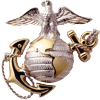|
Alan Turing: The Father of Modern Computer Science
 Alan Turing is considered by many to be the father of modern computer science as the world knows it. He formed the concept of the algorithms and computations with one of his inventions, the Turing machine. Alan Turing is considered by many to be the father of modern computer science as the world knows it. He formed the concept of the algorithms and computations with one of his inventions, the Turing machine.
Alan Turing was born on June 23, 1912 in England, the son of Julius and Sara Turing. He spent his childhood in the care of family friends because his parents often traveled back and forth between England and India. Turing was enrolled at St. Michael’s at age six and showed promise even then. At 14, he went to Sherborne School, and he was so determined to attend his first day of school despite the General Strike that occurred in Britain that he rode a bike 60 miles to get there, staying overnight at an inn.
He had a natural talent at working with numbers and science. He was solving advanced problems at 16 without even learning calculus. Not only was he able to understand Einstein, he could extrapolate on Einstein’s questioning of Newton’s laws of motion. He attended King’s College from 1931 to 1934 and graduate with a degree.
His first major work was On Computable Numbers, with an Application to the Entscheidungs problem, completed in 1936. The paper was the birth of what are now called Turing machines, symbol manipulating devices that can be adapted to simulate the logic of any algorithm, no matter how complex. That same year, Turing entered Princeton and in 1938, he obtained a Ph.D. His dissertation introduced the idea of relative computing. He then returned to Cambridge and spent part of WWII at Bletchley Park trying to break German ciphers and contributed to breaking the Lorenz SZ 40/42 and the Enigma machine.
From 1939 through 1940, Turing invented the electromechanical machine called the Bombe, which was designed to break Enigma faster. By the end of the war, over 200 Bombes were in operation. With the Bombe, the US Navy was able to decipher messages from enemy U-boats much faster, giving the US victory in many battles, including the Battle of the Atlantic.
In 1948, Turing was appointed Reader in the Mathematics Department at the Victoria University of Manchester and the next year, he became deputy director of the computing lab at the Manchester University. In 1950, he wrote Computer Machinery and Intelligence which discusses the problem of artificial intelligence, which is the idea that a computer could think and act like a human. He submitted the idea that they should start with a prototype of a child’s mind and then educate that “mind.” This test of how to determine a machine’s intelligence is now known as the Turing Test.
In 1952, he published a paper that put forth his Turing hypothesis of pattern formation.
That year, Turing met a 19-year-old boy named Arnold Murray, and they went out on a date. The pair had more contact over the following weeks but then, Murray helped a friend break into Turing’s house and Turing reported the crime. When Turing admitted to having a sexual relationship with Murray, he was charged with gross indecency as homosexual acts were illegal at the time. To escape a prison sentence, he accepted chemical castration which lasted for a year. The hormones he was injected with caused him to develop breasts that never disappeared. This also caused his special clearance to be revoked so he was unable to continue his cryptographic work.
Turing died of cyanide poisoning on June 7, 1954. Investigators found a half-eaten apple by his bed and most believe that the apple was laced with the cyanide. The death was ruled a suicide.
Turing was such an influenced on the computer world that the Turing Award, which was first awarded in 1966, was named after him. It’s the computer world’s equivalent to the Nobel Prize. He also has a statue in Manchester that was unveiled in 2001.
This article was written by Mike Haldas, co-founder and managing partner of CCTV Camera Pros. If you found it useful, please share it.
|
Shop for video surveillance products
|
|
|
|
|
|
|
|









 Alan Turing is considered by many to be the father of modern computer science as the world knows it. He formed the concept of the algorithms and computations with one of his inventions, the Turing machine.
Alan Turing is considered by many to be the father of modern computer science as the world knows it. He formed the concept of the algorithms and computations with one of his inventions, the Turing machine.

